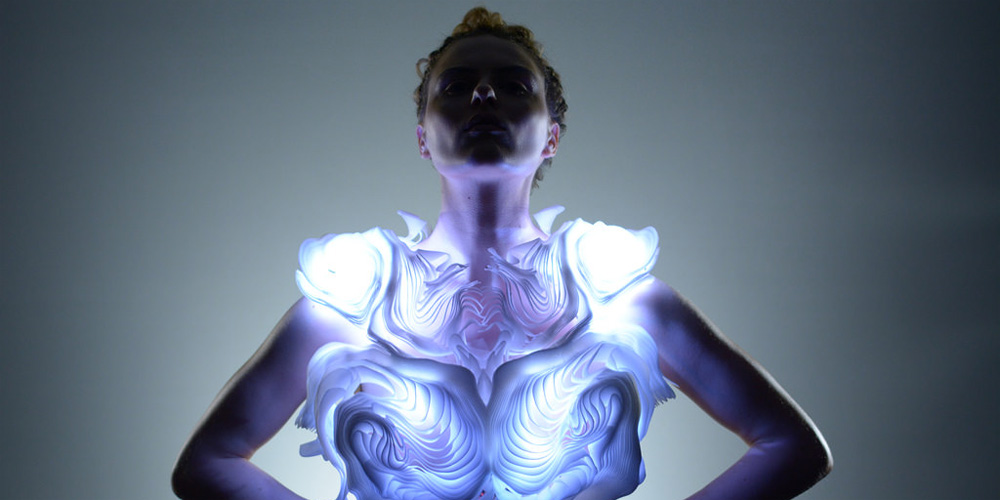
Credit: Kyle Smithers
The art projects assembled in the spacious confines of the venue’s lower levels are dedicated to the question of essences—of being human, of the machine, and what it means to be born out of code. Set in a spectacular bomb shelter and spaces housing this building’s mechanical infrastructure, this exhibition takes full advantage of the unique atmosphere of a former postal service logistics facility.

Characters are a means of visual communication and recording a language. Civilizations throughout the world have created various characters that convey their culture and history. This project focuses purely on the form of the characters rather than their meaning.
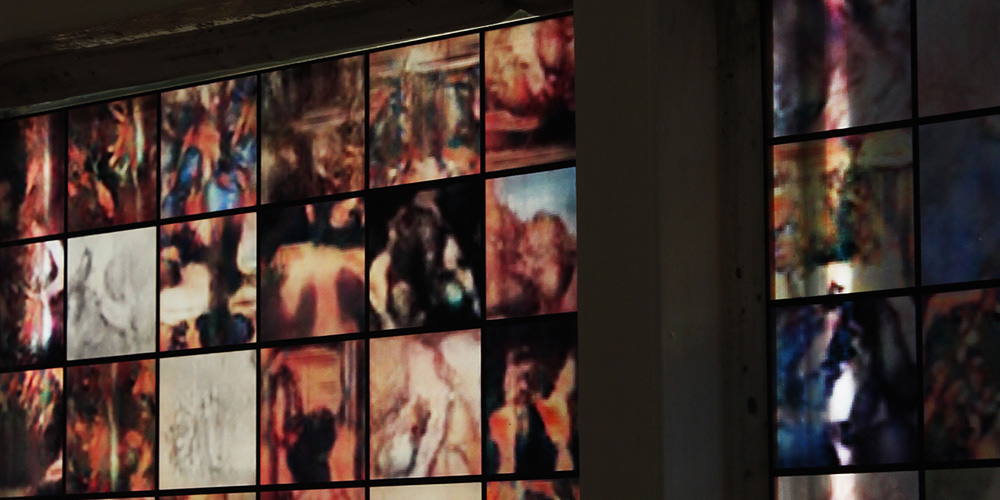
A(.I.) Messianic Window is a project addressing AI’s oversimplification of complex human concepts. The stained-glass window depicts an artificial-intelligence interpretation of the term Messiah. The context of A(.I.) Messianic Window is the current trend of applying humanistic, cultural and non-universally defined concepts to artificial intelligence.
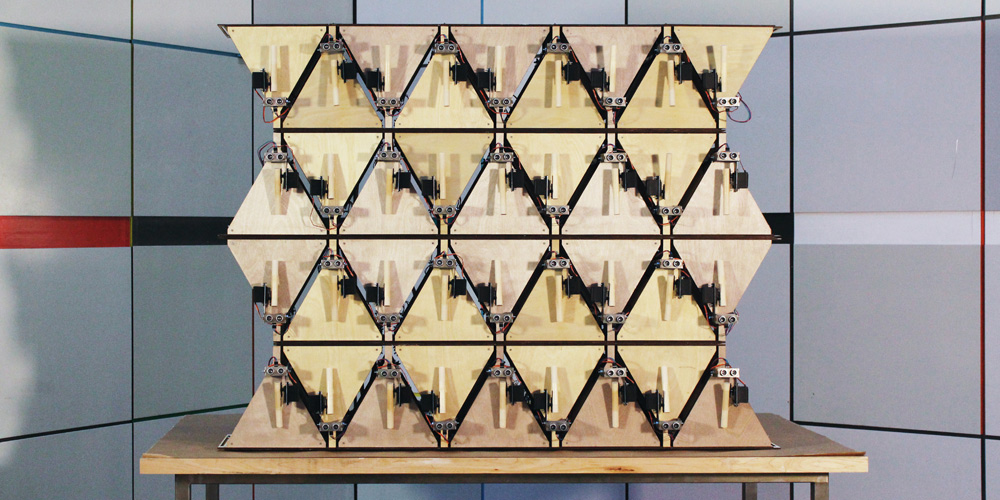
The importance of sound and rhythm is manifested in events such as military marches, protests, manifestations of celebration or spiritual rituals. Interested in the relationship between power and amplification or multiplication of sound, this machine was designed and built as a vehicle to explore and discover such subjects.
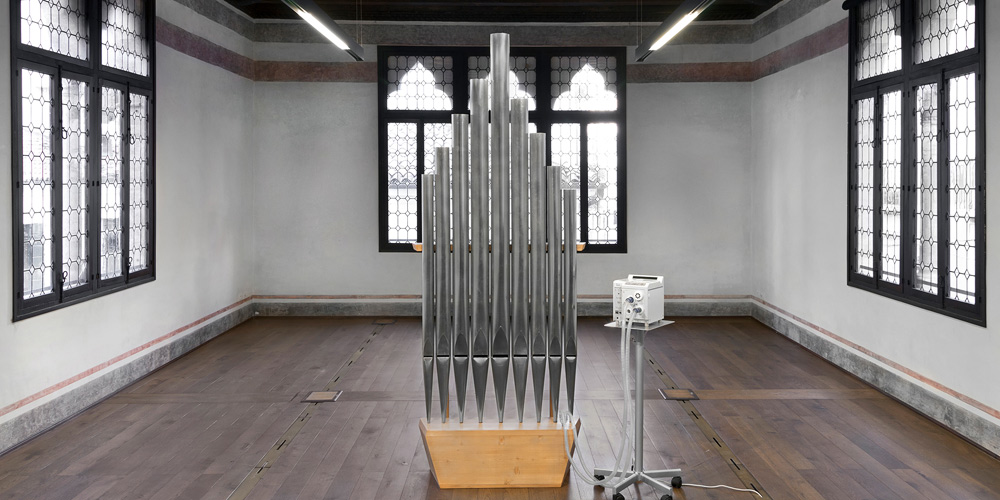
A medical machine for pulmonary ventilation plays a musical chord on a few organ pipes, a fragment of music (in reference to Johannes Brahms’ German Requiem) frozen to the constant rhythm of the automatic breath. The action of this artificial organ raises ethical questions about the will and responsibility involved in this mechanical requiem, a metaphor for a limit that people delegate to technology.
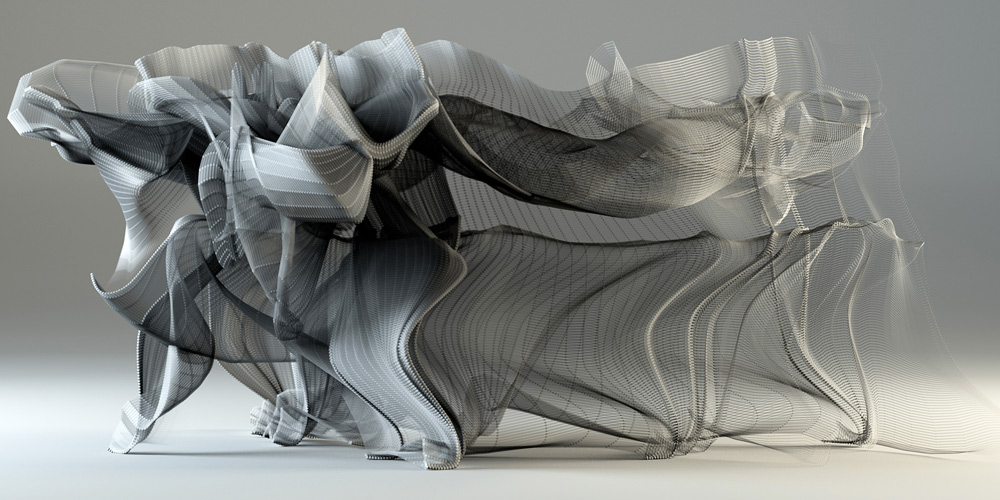
The project unifies Tobias Gremmler’s most recent video works. The comprehensive topic concerns the digital virtualization of the human, culture and mind.
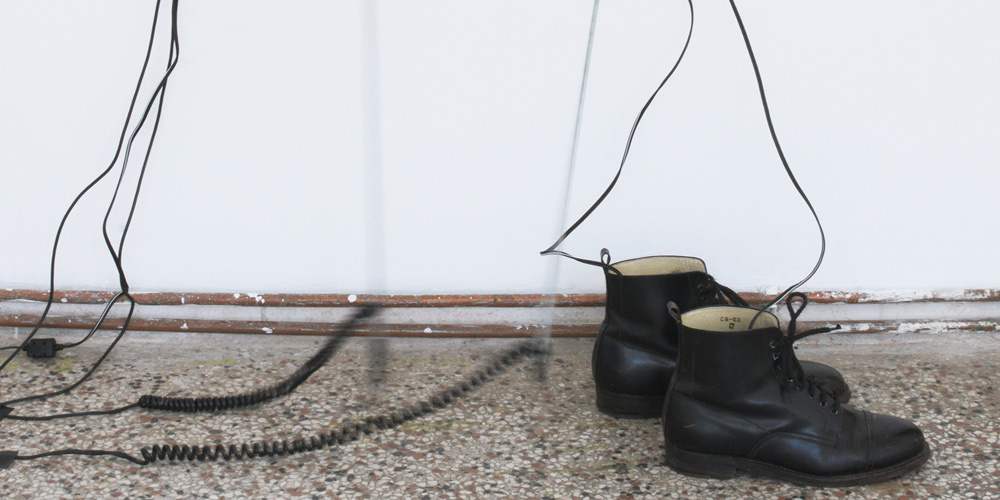
In our audible/profitable economy/exhibition financial microtransactions are transformed into extra tonal sound structures. The exhibition consists of several coin-operated machines, each dedicated to a specific sonic event.
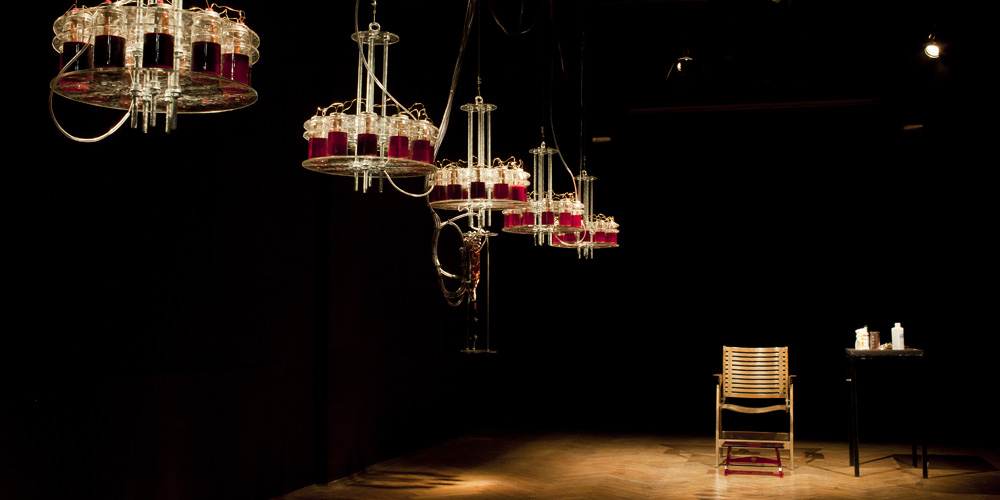
The large-scale project Until I Die is a hybrid installation that uses the artist’s blood, extracted and accumulated over a long period of time. The blood is used to generate electricity for a small sound synthesizer.
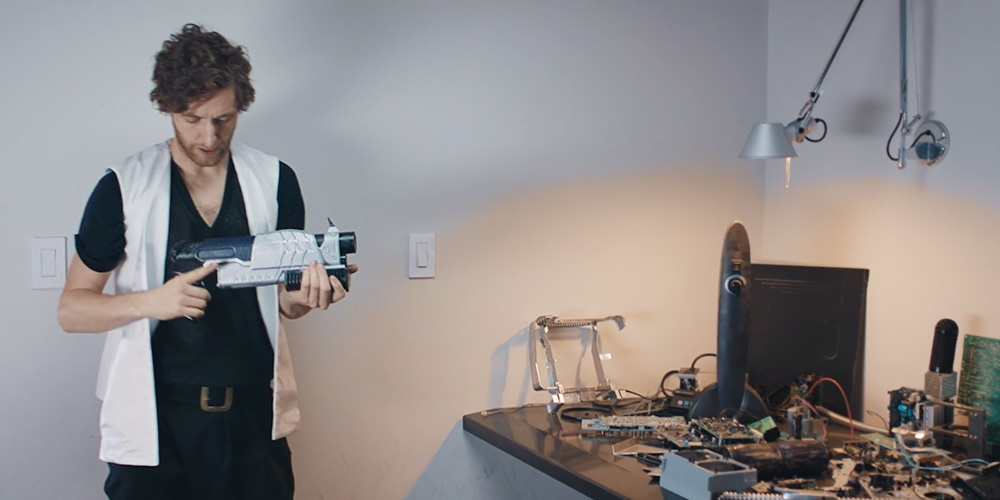
In the wake of Google’s AI Go victory, filmmaker Oscar Sharp turned to his technologist collaborator Ross Goodwin to build a machine that could write screenplays. They created “Jetson” who later renamed himself “Benjamin”, and fuelled him with hundreds of sci-fi TV and movie scripts.

The center elements of the work are a red glass crystal and a flexible Fresnel lens. The project includes many reworked electronic devices – a CD-ROM, an old scanner, reused electric motors. Multiple moving elements provide a wide variability for rather primitive optical elements.
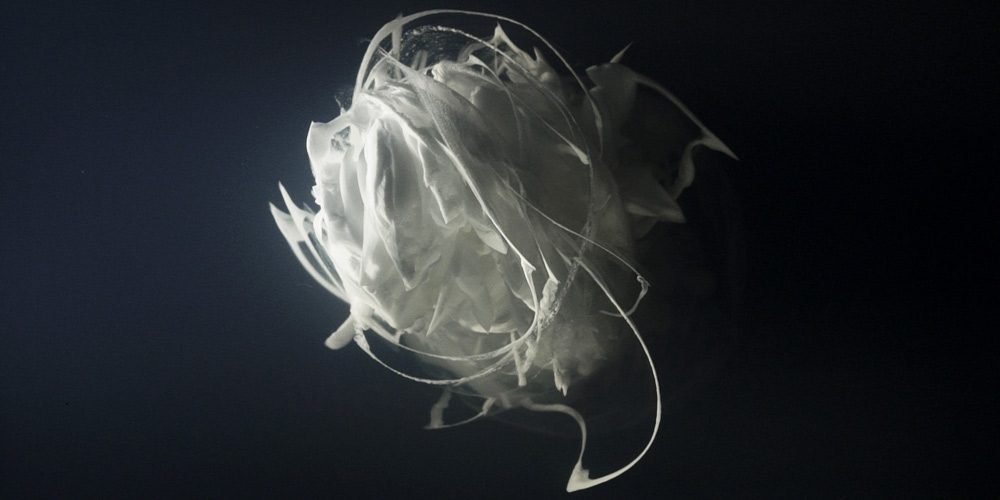
A technological singularity: the point where artificial intelligence surpasses that of humans and continues to accelerate. A gravitational singularity: a theoretical point in space-time of infinite density. The emergence of a thought is imagined here in parallel to extreme gravitational phenomena.
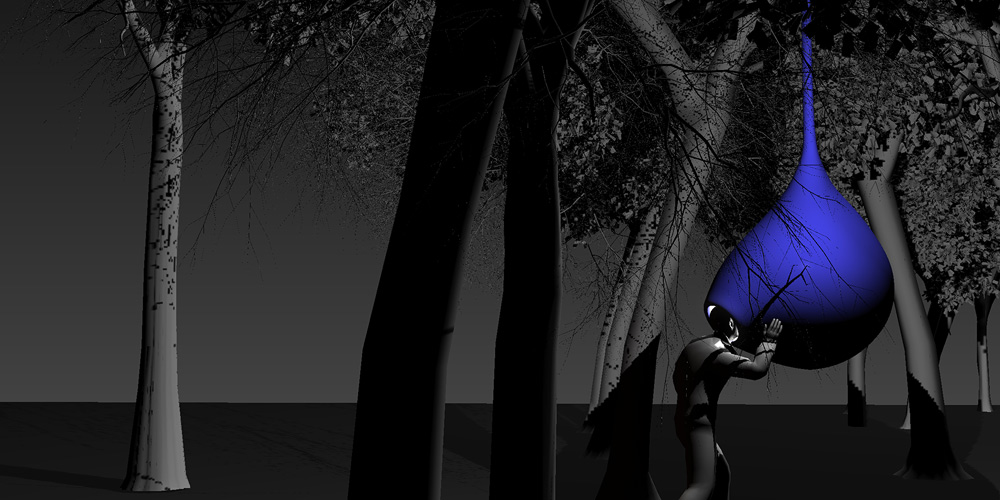
Hybrid Sensorium explores the way we sense our body within physical space and the sensory distortions caused both by mediating technology and direct contact. The artwork is placed in immediate physical contact with the visitor, both thus becoming vulnerable to emotional contamination.
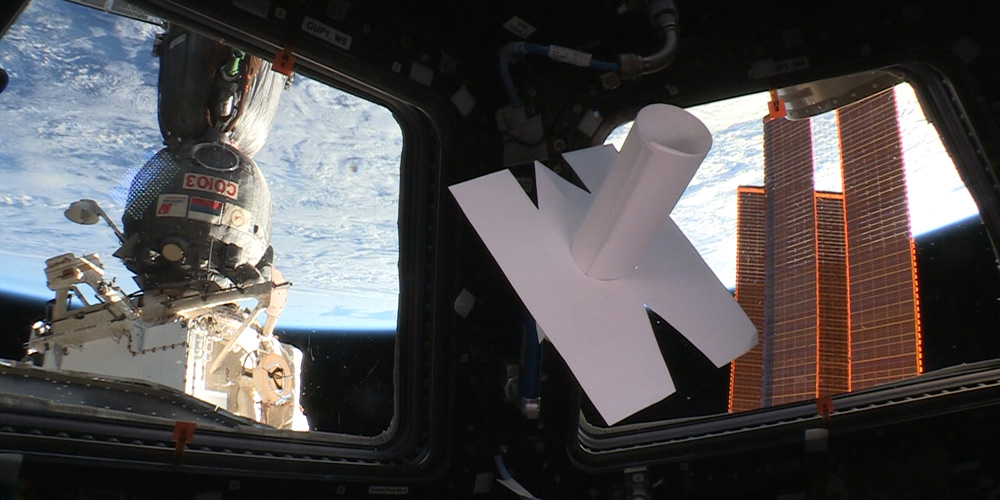
Inner Telescope is centered on a visionary artwork conceived by Eduardo Kac and realized in space in collaboration with the French astronaut Thomas Pesquet.
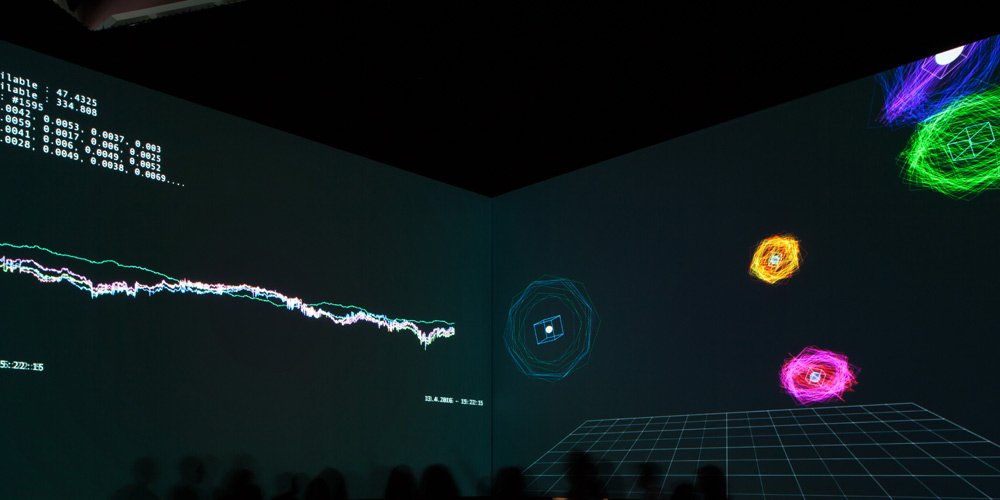
Chains is an interactive installation dealing with the bitcoin cryptocurrency. Based on experiments with automatic trading systems, the artists developed a system to visualize and thereby study the principle of block chains.
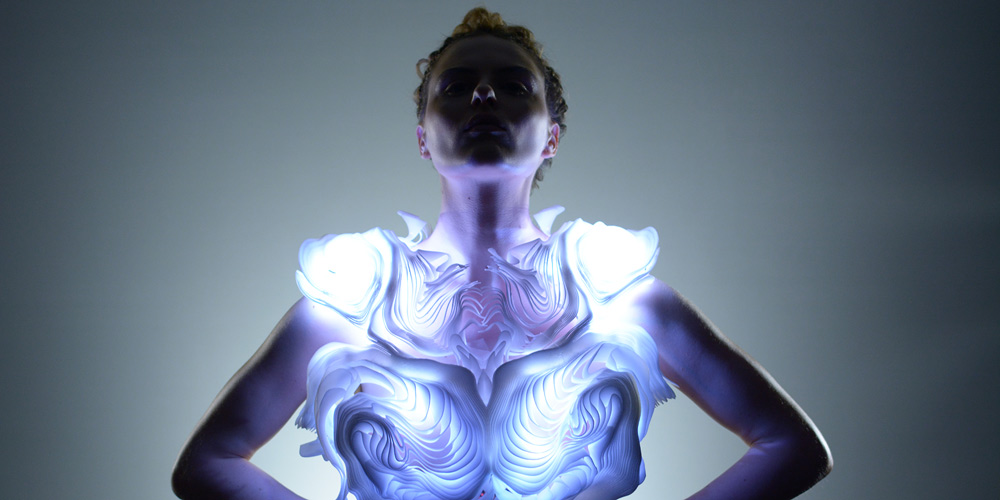
Synapse and Bodyscape are both examples of fashion items which integrate the latest digital fabrication techniques with robotic and sensor technologies in order to explore how our wearables can become an interface with the world around us.
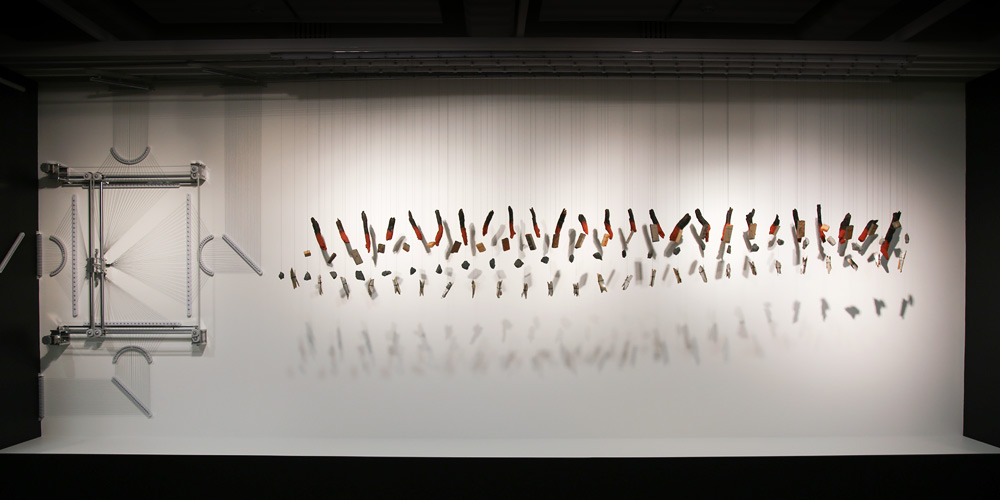
Data Stratification evolved from ideas of the tools and technologies that colonizers use to inhabit and disrupt the colonized in Australia, and to fragment these people and their culture. The artist sees text as one of these colonizing technologies.
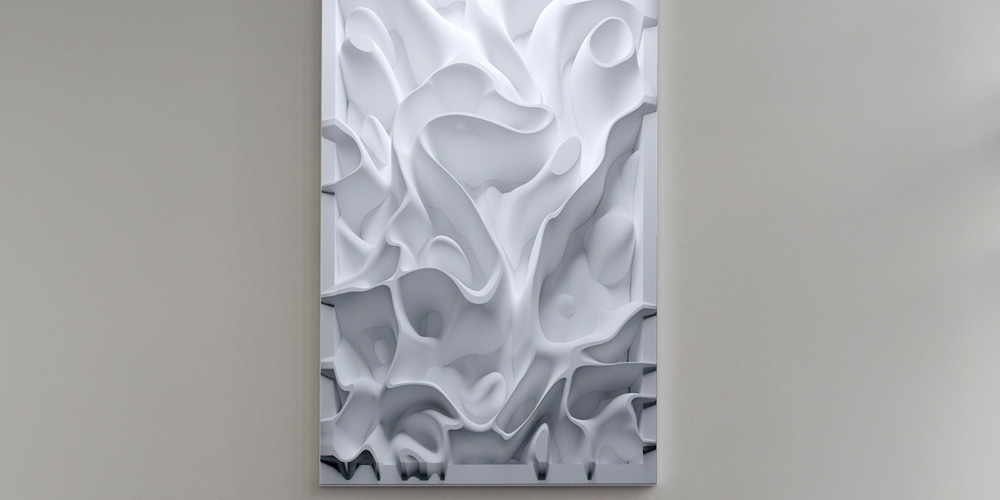
Wind of Linz: Data Paintings is a site-specific work commissioned by Ars Electronica that turns the invisible patterns of wind in and around the city of Linz into a series of poetic data paintings within a 6ʹ x 12ʺ digital canvas.
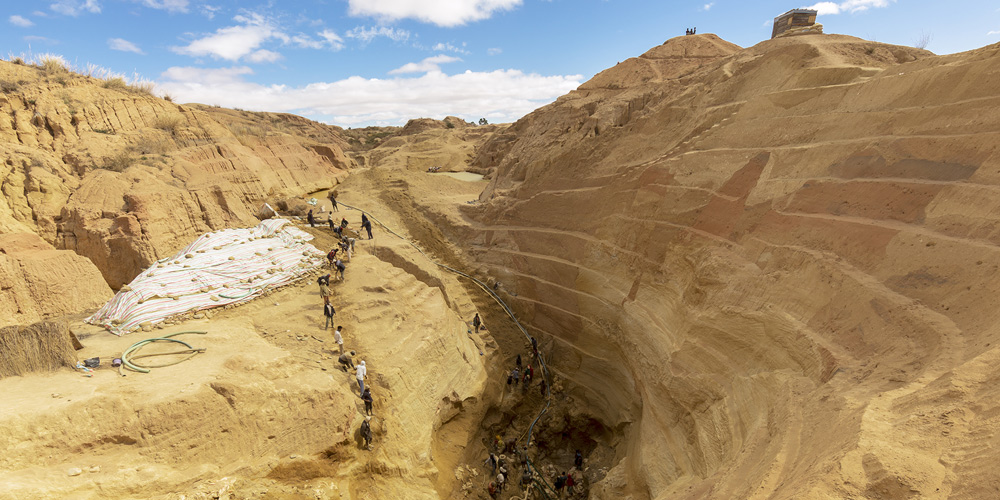
As the beat drops and the stage lights strobe, pop stars dripping with bling flash their jeweled gold teeth. A world away, in a hole in the ground in the wild-west mining town of Ilakaka, Madagascar, another ensemble of bodies move in rhythm, to dig dirt by hand out of the bottom of a precious gem mine.
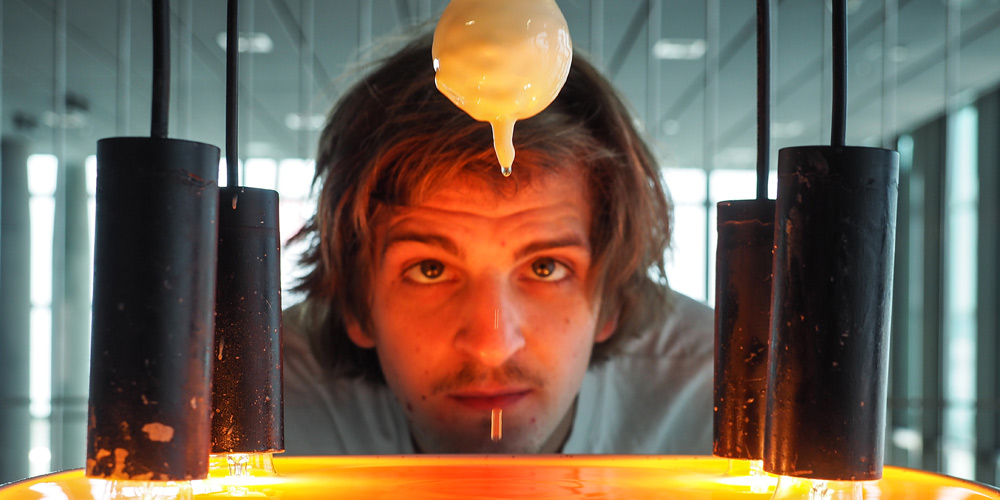
Domas Schwarz’s installation Wachstropf showcases the beauty of natural processes and the transience of the environmental states that we have naturally grown accustomed to, and constitutes a metaphor for the works created in this world by nature and humankind.
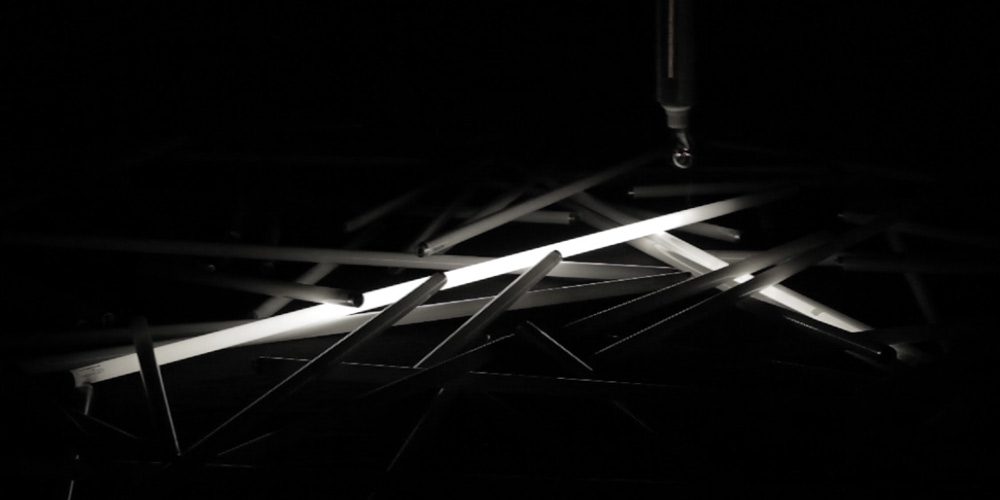
Field is a light installation combining fluorescent tubes and Tesla coils. It utilizes the coils’ high-voltage fields to illuminate surrounding tubes without the use of physical power connections.
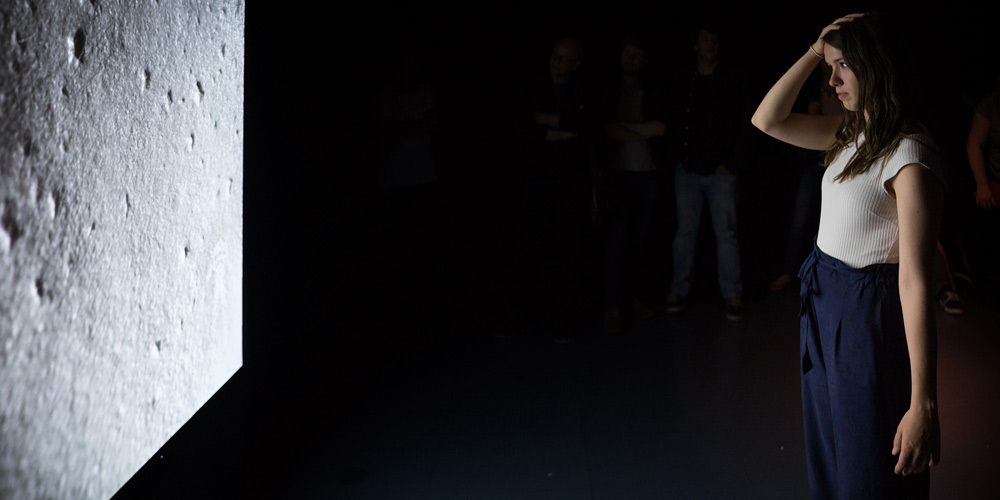
All of Us explores the aesthetics of scars to highlight their visual aspects and exhibit something that is usually not on display. Apart from the visible wound, scars are also constant reminders of injuries and events.
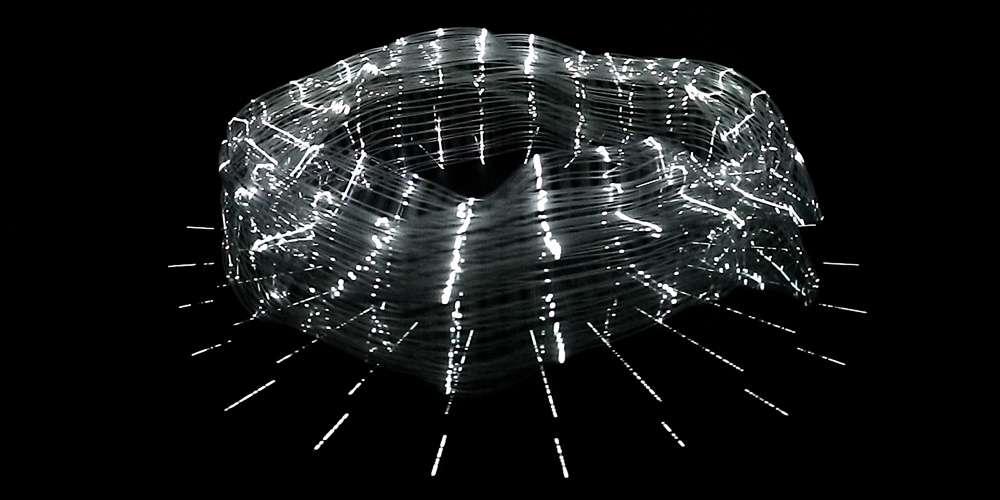
Sculpture of Time is several works developed from the toki- series. Their creation started with the question of what it means to “move.” These works realize time, something that cannot be seen, by connecting two-dimensional movement to the third dimension through 3D printing.
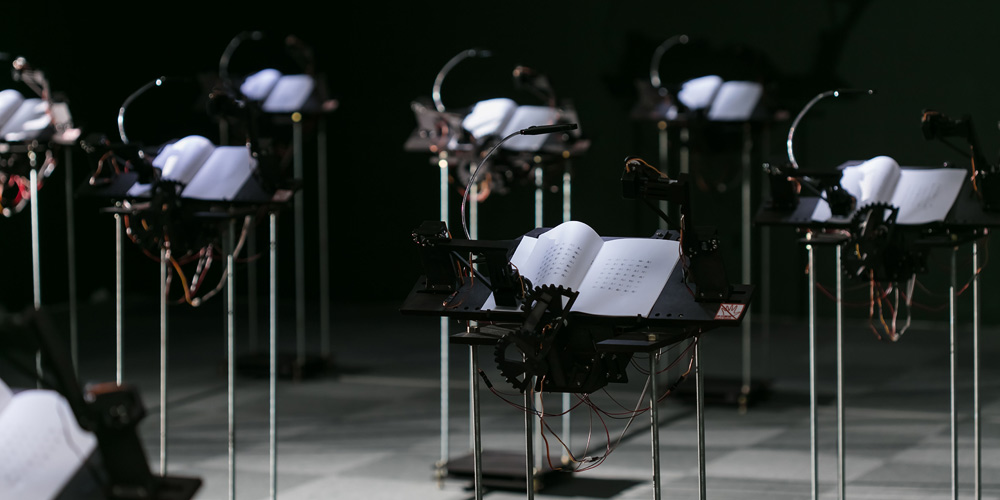
Reading Plan is an interactive artwork with 23 automatic page-turning machines. When audiences enter the exhibition room, the machines start to turn the pages automatically and read their contents in the voice of elementary school students. The machines are a metaphor for a Taiwanese classroom.
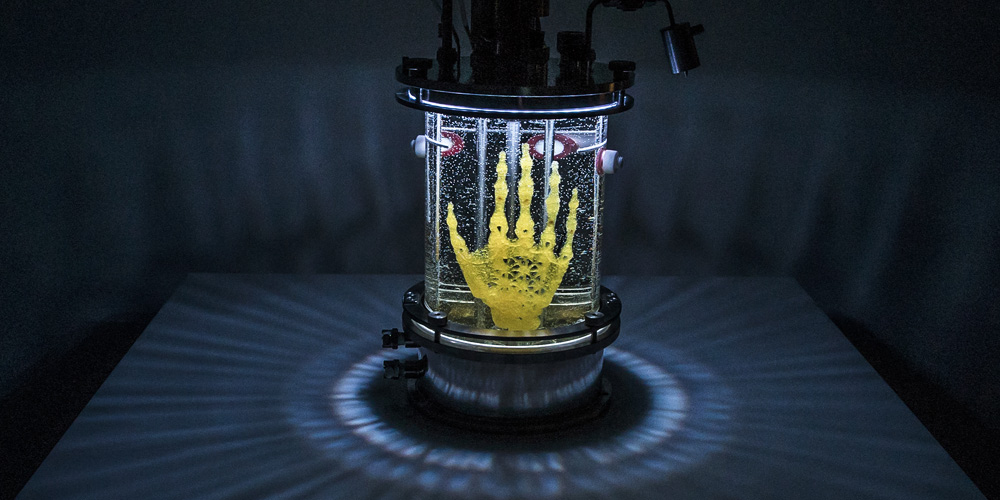
Leveraging the intelligence of human stem cells, Amy Karle created Regenerative Reliquary a bioprinted scaffold in the shape of a human hand 3D-printed in a biodegradable PEGDA-hydrogel that disintegrates over time.
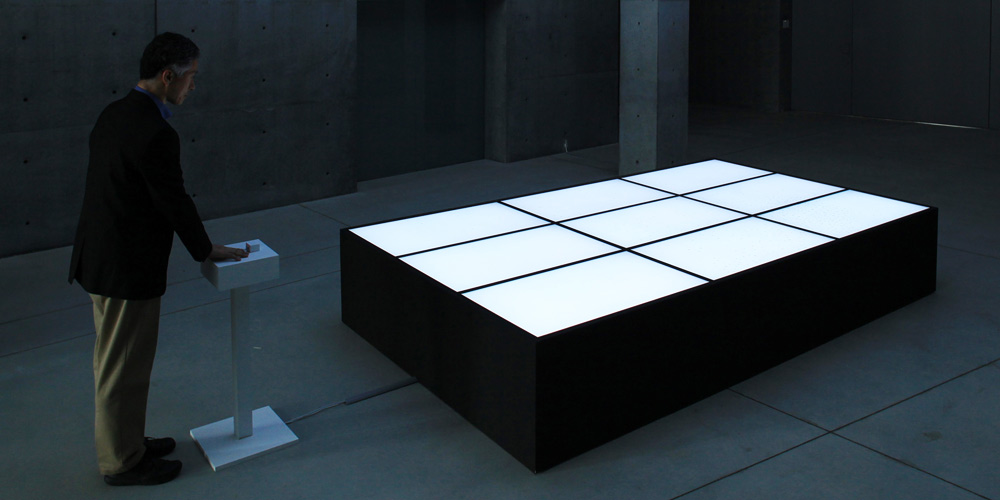
Pool of Fingerprints consists of a large display surface and a fingerprint scanner. The display surface is populated with fingerprints swimming like a school of fish. The visitor can release his or her own fingerprint and watch it swim with others.
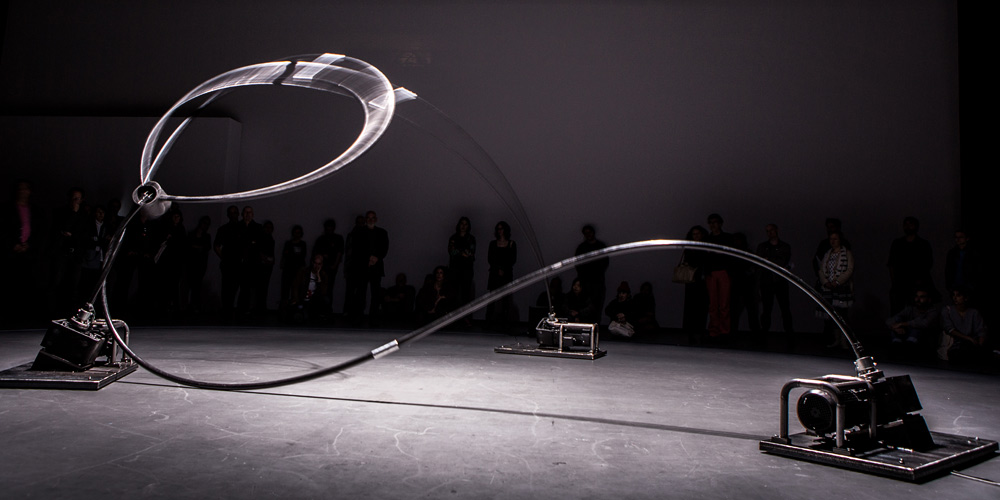
Nyloïd is an impressive sound sculpture, a huge tripod consisting of three six-meter-long nylon limbs animated by sophisticated mechanical and sound devices. Sensual, animal and threatening, this mobile draws its dramatic power from the reactivity of its plastic and sound material to diverse mechanical constraints.
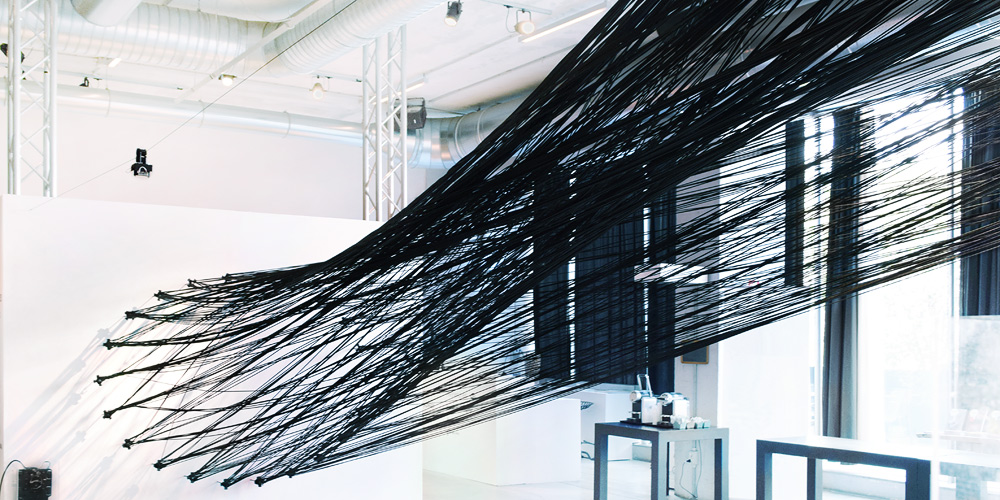
MoRFES_02 (Mobile Robotic Fabrication Eco-System 02) is an iteration of a series of experiments and demonstrators conducted by Maria Yablonina as part of her ongoing research on collaborative mobile robots for architectural fabrication.
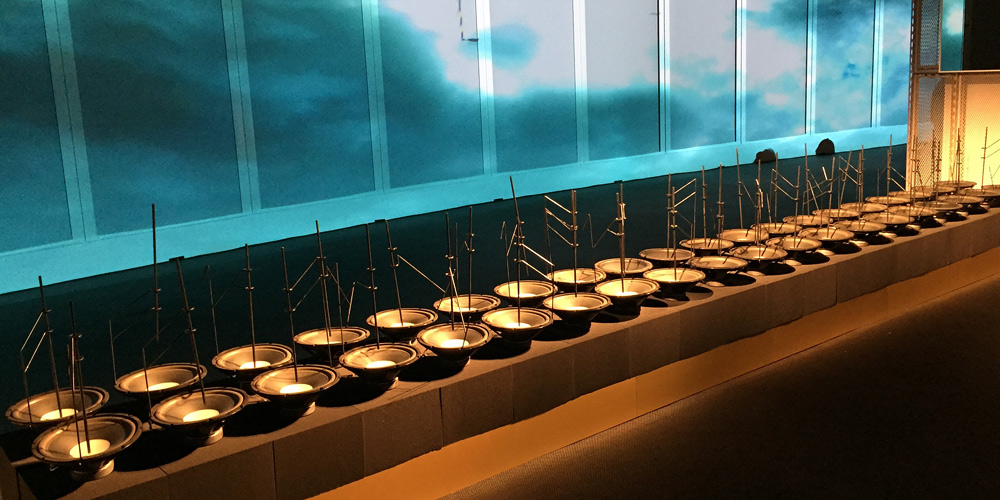
The adjective “fidgety” describes a nervous and jumpy feeling. Normally people see this as a bad feeling. However, the artist treats it as a musical idea.





























